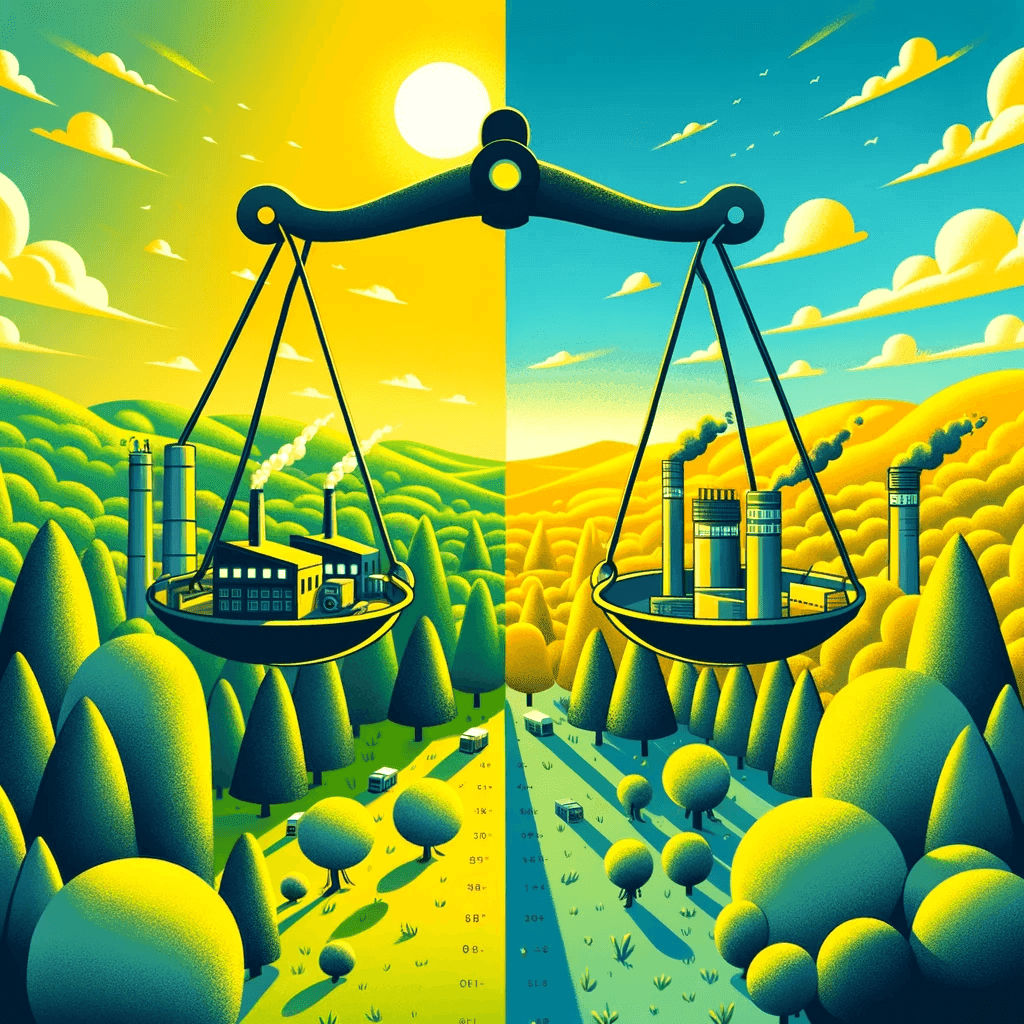How do Carbon Credits Work
Understanding how carbon credits work is key to grasping modern environmental efforts. Carbon credits are an essential strategy in the fight against climate change, providing a financial incentive for reducing greenhouse gas (GHG) emissions or removing them from the atmosphere. This system aims to incentivize companies to reduce their GHG emissions by rewarding lower emissions with tradable credits.
What are Carbon Credits?
Carbon credits are tradable certificates, each representing a certain amount of carbon dioxide or equivalent gases from the reduction or removal of GHG emissions. They´re used to incentivize the implementation of climate solutions.
1 Carbon Credit = 1 Metric Ton of CO2-e
These credits can originate from various projects like renewable energy or reforestation, each with unique characteristics and market values and initiated by private parties and companies which are sometimes referred to as suppliers of carbon credits. The credits often align with Sustainable Development Goals, adding additional environmental and social value to the impact that’s quantified in Metric Ton of CO2-e.
Carbon Markets
Carbon markets are a global trading system where companies, governments, and other entities buy and sell carbon credits, allowing for trading of emission reductions or removal. Carbon markets operate both under regulatory frameworks and voluntary initiatives, facilitating the exchange of credits to meet emission reduction targets through collaboration.
Is it all the same?
No, Carbon markets can be divided into two main segments: Compliance (or regulatory) market and voluntary carbon market (VCM). The compliance market is driven by regulatory schemes that mandate emission reductions from different sectors or industries, whereas the voluntary market operates outside of these compliance regimes. Onwards we focus on VCMs.
Why is it called a "Voluntary" Carbon Market?
It is called the "Voluntary" Carbon Market because participation in this market is not mandated by regulatory requirements. Entities choose to buy carbon credits on a voluntary basis, often to take responsibility for their emissions, to meet sustainability goals to complement for currently unabaitable emissions, rather than to comply with legal obligations.
How Carbon Credits Work
A simplification of the process involves creating projects that reduce or remove greenhouse gases, earning credits for these impacts, and then selling these credits to organisations that want or need to compensate for, or offset their emissions.
Below are simplified steps:
- Project Proponents: These are individuals or groups who come up with ideas for projects that can reduce or remove greenhouse gases. For example, they might propose planting a large number of trees or building a wind farm.
- Project Developers: Once a project idea is proposed, project developers work on turning these ideas into reality. They plan how the project will work, figure out the costs, and do the actual work of creating the project, like planting trees or constructing wind turbines and compare the project to the business-as-usual scenario. For example, without afforestation it’s unlikely that there will be a forest after the project has been implemented.
- Carbon Reduction and Removals: These projects help reduce or sequester carbon in the atmosphere. For example, trees absorb carbon dioxide, and wind farms produce clean energy, reducing the intensity of fossil fuel powerplants within a grid.
- Earning Carbon Credits: For every ton of carbon dioxide the project removes or prevents from going into the atmosphere, the project earns a carbon credit. So, if a project prevents 1,000 tons of carbon dioxide from being emitted, it earns 1,000 carbon credits.
- Alignment with Requierments: Projects need to follow and comply with requirements for registration and issuance of credits. They’re established by ISO and amended by Greenhouse gas programs in order to safeguard additionality, integrity, double counting and other crucial principles of carbon credits.
- Verification: An independent accredited validation and verification bodies assess the project to make sure it really does what it intends to do. They validate the project and verify how many carbon credits the project earns.
- Marketplaces: Once the project has issued carbon credits, these credits are often sold on special marketplaces. These marketplaces are like online stores or auction houses for buying and selling carbon credits.
- Organisations Buy Credits: Organizations, like big companies, buy these credits for various reasons. Some buy them to offset their own carbon emissions, while others might buy them to meet government regulations or to improve their public image.
- Retiring Credits: When an organization buys and retires a carbon credit, it’s taking responsibility for one ton of carbon dioxide they have emitted. If a company produces a lot of greenhouse gases, buying credits can help balance out their emissions while they introduce internal measures to reduce their emmissions.
Successful carbon credit projects
There are over 85 projects at Carbon Registry in different stages, and you can browse all active and validated carbon projects here. The page showcases diverse carbon reduction or removal initiatives from multiple parties, in various countries, employing different methodologies and technologies across multiple sectors. All with the mission to introduce impactful solutions to fight climate change.
Each project card provides a snapshot of the project's impact, including estimated annual tonnes of CO2-e mitigation and project duration. Significantly, projects align with various Sustainable Development Goals, indicating their broader contributions to sustainability beyond climate impact.
The two featured carbon projects highlight the diversity of climate action across the globe.
ISKUR-2 Rooftop Solar Power Bundled Project, based in Turkey, focuses on provide clean energy to the National Grid System of Turkey, with estimated average annual mitigation of 16,000 t CO2-e over 30 years.
Sveinatunga represents afforestation and conservation efforts in Iceland, with an estimated annual mitigation of 1,000 CO2t for a duration of 50 years.
Both projects contribute to multiple Sustainable Development Goals (SDGs), demonstrating the multifaceted benefits of such initiatives. These projects exemplify the different approaches to climate solutions, from renewable
